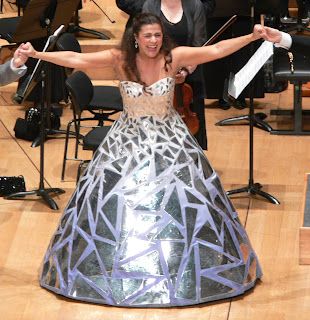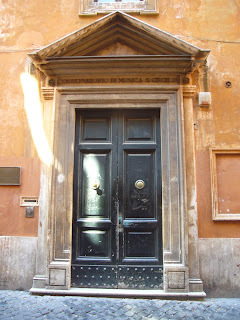Soprano put the spotlight back on ‘forgotten’ composers and singers
 |
| Cecilia Bartoli, who was born in Rome on this day in 1966 |
Mezzo-soprano Cecilia Bartoli celebrates her 50th birthday today, having been born on this day in 1966 in Rome.
Bartoli is renowned for her interpretations of the music of Mozart and Rossini and for her performances of music by some of the lesser-known Baroque and 19th century composers.
Her parents were both professional singers and gave her music lessons themselves and her first public performance was at the age of eight when she appeared as the shepherd boy in Tosca.
Bartoli studied at the Conservatorio di Santa Cecilia in Rome and made her professional opera debut in 1987 at the Arena di Verona.
The following year she earned rave reviews for her portrayal of Rosina in Rossini’s The Barber of Seville in Germany and Switzerland.
Bartoli made her debut at La Scala in 1996, followed by the Metropolitan Opera in 1997 and the Royal Opera House in 2001.
She has performed and recorded Baroque music by composers such as Gluck, Vivaldi, Haydn and Salieri.
 |
| Cecilia Bartoli takes the applause after a performance of Rossini's La Cenerentola in Paris |
In 2012 Bartoli became artistic director of the Salzburg Whitsun Festival and her personal programme choices immediately resulted in record ticket sales. She has since sung Cleopatra in Handel’s Giulio Cesare and the title roles in Vincenzo Bellini’s Norma and Rossini’s La Cenerentola there.
The singer has a particular interest in early 19th century music, the age of Romanticism and bel canto, and has developed a fascination with the singer Maria Malibran. She marked the bicentenary of Maria Malibran’s birth in March this year with the release of Maria, a new album devoted to the singer.
Bartoli lives with her husband, the Swiss baritone Oliver Widmer, on the shores of Lake Zurich in Switzerland and also in Rome.
 |
| The entrance to the Conservatorio di Santa Cecilia in Via dei Greci in Rome |
Travel tip:
The Conservatorio di Santa Cecilia, where Cecilia Bartoli was educated, dates back to 1875. It was set up under the auspices of one of the oldest musical institutions in the world, now known as the National Academy of Santa Cecilia, which was established in 1565. The Conservatorio can be found in Via dei Greci, not far from the Spanish Steps in central Rome. The Academy is located at the Parco della Musica in the northern part of Rome in Viale Pietro de Coubertin in the Flaminio district, close to the location of the 1960 Summer Olympic Games.
Travel tip:
Cecilia Bartoli’s debut at La Scala in Milan as Isolier in Le Comte Ory in 1991 helped establish her as one of the world’s leading Rossini singers. The opera house has a fascinating museum displaying costumes and memorabilia from the history of opera that is well worth visiting. The entrance is in Largo Ghiringhelli, just off Piazza della Scala. It is open every day except the Italian Bank Holidays and a few days in December. Opening hours are from 9.00 to 12.30 and 1.30 to 5.30 pm.
More reading:
The amazing talent of opera composer Rossini
The success and sadness of Antonio Vivaldi
(Photo of Conservatorio di Santa Cecilia by Lalupa CC BY-SA 3.0)
Home






